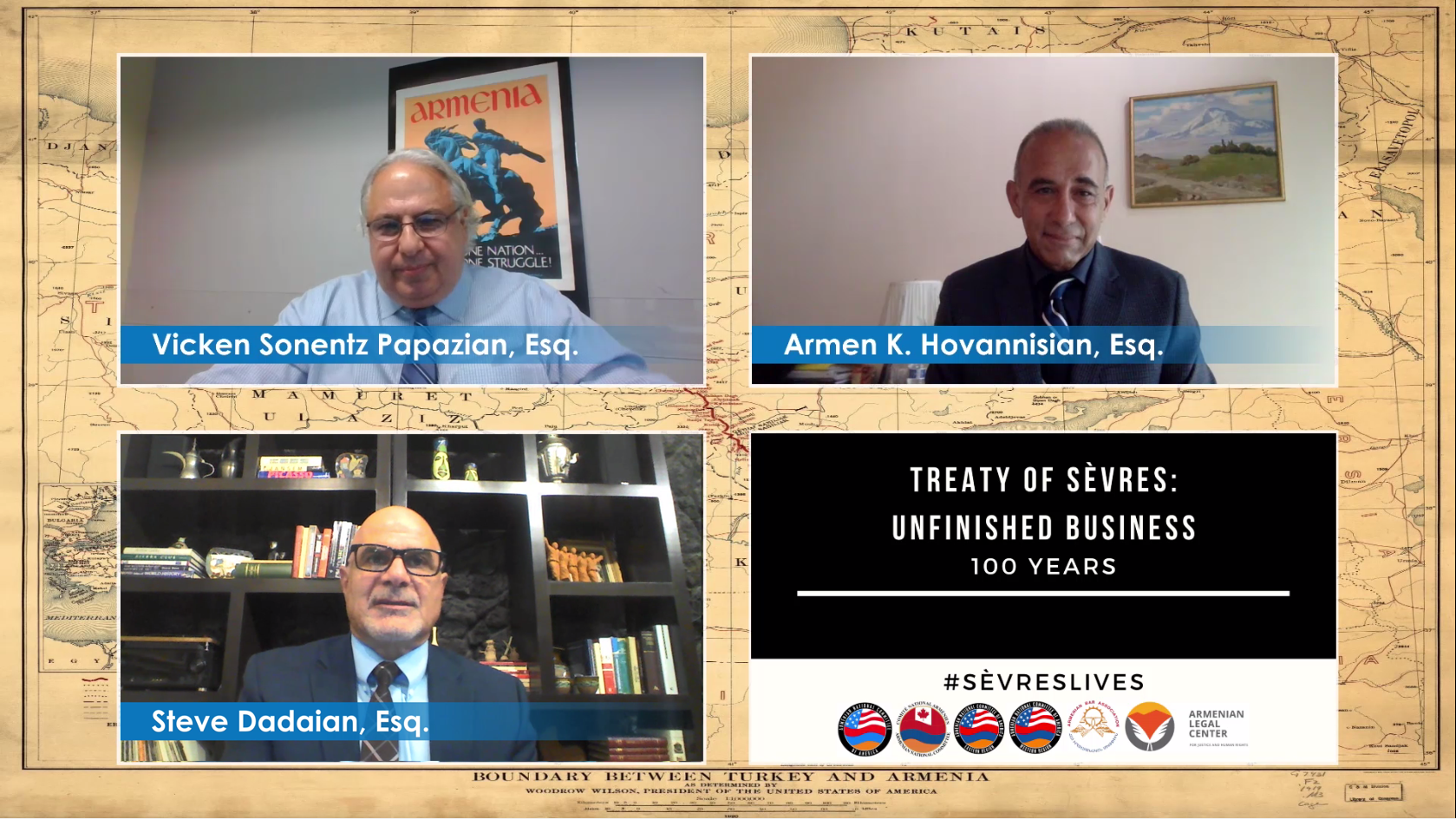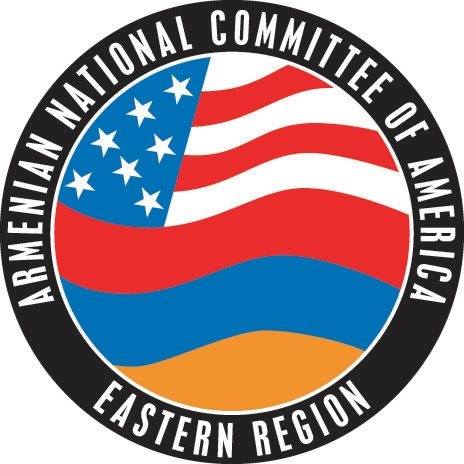
WATERTOWN, Mass.—Panelists Vicken Sonentz Papazian, Esq., Steve Dadaian, Esq. and Armen K. Hovannisian, Esq. participated in the August 20 Facebook live discussion “Treaty of Sèvres: Unfinished Business” marking the 100th anniversary of the Treaty. The online event was produced by the Armenian National Committee of America (ANCA) Eastern Region, in partnership with the ANCA, the Armenian National Committee (ANC) of Canada, ANCA Western Region, the Armenian Legal Center for Justice and Human Rights and the Armenian Bar Association.
Broadcast live on a broad range of Facebook channels reaching hundreds of thousands, including the ANCA, Asbarez, Armenian Weekly and Armenian Bar Association, among others, the panel provided viewers with an overview of the Treaty of Sèvres including a discussion of its legality and relevance today.
August 10, 2020 marked 100 years since the signing of the Treaty of Sèvres, an international document endorsed by both Turkey and the Republic of Armenia in 1920 that recognizes that Turkey is responsible for its war crimes and demands that Turkey take steps to facilitate the process of punishing those directly involved in the crime.
“The Treaty of Sèvres must not only be viewed as a historic legal document, but also as the international community’s acknowledgment and confirmation of Armenia’s legitimate territorial claims,” said Papazian, a Los Angeles-based attorney and former executive director of the ANCA. “The international community’s failure to enforce the terms of the Treaty continues to adversely impact the region to this very day, demonstrating that the terms of the Treaty are as relevant, and the enforcement of the Treaty as necessary today as they were 100 years ago,” he continued in his introduction as moderator.
Dadaian, a trial attorney in California and member of the ANCA National Board, provided viewers with the in-depth historical context of the Treaty of Sèvres, including the relevant events during World War I, the Armenian Genocide, the territorial provisions and Allied Powers’ zones of influence. He also described the specific history related to the Treaty of Sèvres and the granting of the Armenian Homeland—a Homeland that was initially intended to be a prosperous and defensible territory—a territory in which Armenians would not be a minority. “The self-executing 89th and 90th clauses of the Treaty of Sèvres are valid and enforceable under international law irrespective of the rest of the Treaty and allowed for legal title to the Van, Erzurum, Bitlis and part of Trebizond vilayets to be lawfully and irrevocably transferred to the Republic of Armenia on November 22, 1920,” said Dadaian.
Dadaian was emphatic that “no other legally enforceable agreement since Sèvres and the Wilson Arbitral Award of November 1920 has referenced the delineation of the Armenian Turkish frontier. It remains the last word on that frontier. Ironically perhaps it is only the Republic of Turkey that truly recognizes this reality as evidenced by their thinly veiled attempt to make the affirmation of the invalid Treaty of Kars as their most important clause in the unratified Turkish Armenian Protocols of 2009. Those clauses of the Treaty of Sèvres serve as Kryptonite to Turkey’s claim of territorial rights to those vilayets.”
Dadaian concluded, “As to the oft-repeated myth that the Treaty of Lausanne somehow replaced the unratified Sèvres Treaty vis-à-vis the Armenian frontier, one need only look to the missing presence of Armenia as a signatory to Lausanne and, in fact, neither the word Armenia nor the eastern frontier were ever even mentioned in that treaty. All that remains is the political will to enforce that which the law is clear on.”
Hovannisian, also a practicing attorney in the State of California who chairs the Armenian Bar Association’s Armenian Genocide Reparations Committee and serves on its Board of Governors, furthered the conversation with the legal implications of the Treaty of Sèvres, specifically focusing on Articles 89 and 90, which include the creation of the Armenian state and President Woodrow Wilson’s arbitration. “There is an old saying among lawyers that if you have the facts on your side, pound the facts; if you have the law on your side, pound the law; if you have neither on your side, pound the table,” explained Hovannisian. “With the facts and the law of Sèvres on our side, we are in a position to drill down deeply into both, leaving the table-thumping to others.”
The Treaty of Sèvres demands that Turkey repeal the 1915 Abandoned Property laws and the supplementary provisions thereof, compelling it to return all confiscated properties to individual or community owners. Finally, the Treaty of Sèvres provides a legal basis for the arbitration appeal to US President Woodrow Wilson to determine the Armenia-Turkey border.
The panel underscored the foundation of the argument—the notion that Articles 89 and 90 granted the territory to Armenia upon resolution of the Arbitration and that based on that the Armenian nation has a valid, legal claim to the territory. Hence, these make the Treaty of Sevres, even 100 years later, unfinished business.
A follow-up panel is planned to answer viewer questions and will be announced soon.




Be the first to comment